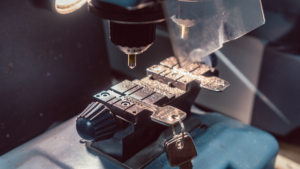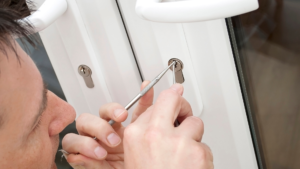Closed-Circuit Television (CCTV) systems have woven themselves into the fabric of modern security measures. Whether deployed for residential or commercial purposes, these systems provide a reliable method for monitoring and safeguarding properties. To secure the effective and optimal performance of your CCTV system, think about the following tips.
Meticulous Camera Arrangement: Meticulously arranging cameras is vital for obtaining footage that is both clear and comprehensive. Identify key areas for surveillance, including entry points, zones with heavy foot traffic, and vulnerable spots. Ensure cameras are positioned at suitable heights and angles to minimize blind spots.
Emphasize Total Viewing: Decide on cameras featuring wide-angle lenses or pan-and-tilt options to cover large regions. This lowers the camera count while upholding thorough coverage.
Climate Endurance: For outdoor camera installation, opt for weather-resistant models that can endure various weather conditions. This endurance ensures uninterrupted surveillance, no matter the surroundings.
Exceptional Camera Quality: Choose cameras with exceptional resolution for superior image clarity and intricate details. These high-quality cameras are also highly effective in low-light scenarios, ensuring continuous surveillance capabilities.
Wireless Connectivity: Decide on a CCTV setup that offers remote access via a smartphone app or web browser. This aspect allows you to watch over your property in real-time from anywhere, enhancing convenience and security.
Optimal Illumination: Sufficient lighting is vital for clear video footage, especially during the nighttime. Think about installing cameras near existing light sources or using cameras with infrared (IR) sensors for enhanced night vision.
Consistent System Wellness: Maintain consistency in caring for the wellness of your CCTV setup, regularly confirming camera cleanliness, precise alignment, and reliable operation. Dust or debris on the lens can impair image quality.
Adequate Storage Volume: Double-check that your CCTV system possesses adequate storage volume for recording footage as needed. Depending on your circumstances, think about cloud storage or opt for an on-site digital video recorder (DVR) or network video recorder (NVR).
Privacy Consideration: Show consideration for privacy laws and regulations when installing cameras, especially in zones that might infringe on the privacy of others.
Safe Network Linkage: When your CCTV system connects to the internet, establish its safety with sturdy passwords and encryption. Regularly update firmware to shield against potential vulnerabilities.
Movement Identification: Employ motion detection settings to start recording and alerts when movement is recognized. This preserves storage capacity and directs your focus to potentially important events.
Comprehensive System Melding: Integrate your CCTV system with additional security measures, such as alarms or access control systems, to establish a complete security solution.
Privacy Configuration: When your cameras track regions with a mixture of public and private spaces, implement privacy settings to veil private areas from being seen.
Consistent Upgrades: Ensure your CCTV system stays current by installing the latest firmware and software updates provided by the manufacturer.
Training for Effective Handling: If the CCTV system will be accessed by multiple individuals, ensure they undergo training for effective handling.
Regulatory Familiarity: Get acquainted with local regulations and guidelines concerning the deployment of CCTV systems, especially in public settings.
Surveillance Review: Frequently assess recorded footage to pinpoint any unusual or suspicious activities. This practice aids security measures.
Secondary Energy Support: Think about equipping your CCTV system with backup power, such as uninterruptible power supply (UPS) devices. This contributes to maintaining surveillance during power outages.
Ongoing Verification: Continue to verify your CCTV system to confirm the functioning of all cameras and the proper recording and storage of footage.
Professional Installation: While some DIY options are available, professional installation guarantees accurate camera positioning, wiring, and configuration for optimal performance.
By putting these recommendations into practice, you can guarantee that your CCTV system remains a strong and effective asset for enhancing security, whether it pertains to your home, office, or other property. Bear in mind that technology is constantly progressing, so staying updated about the latest advancements in CCTV systems can offer an extra layer of enhancement to your security protocols.





